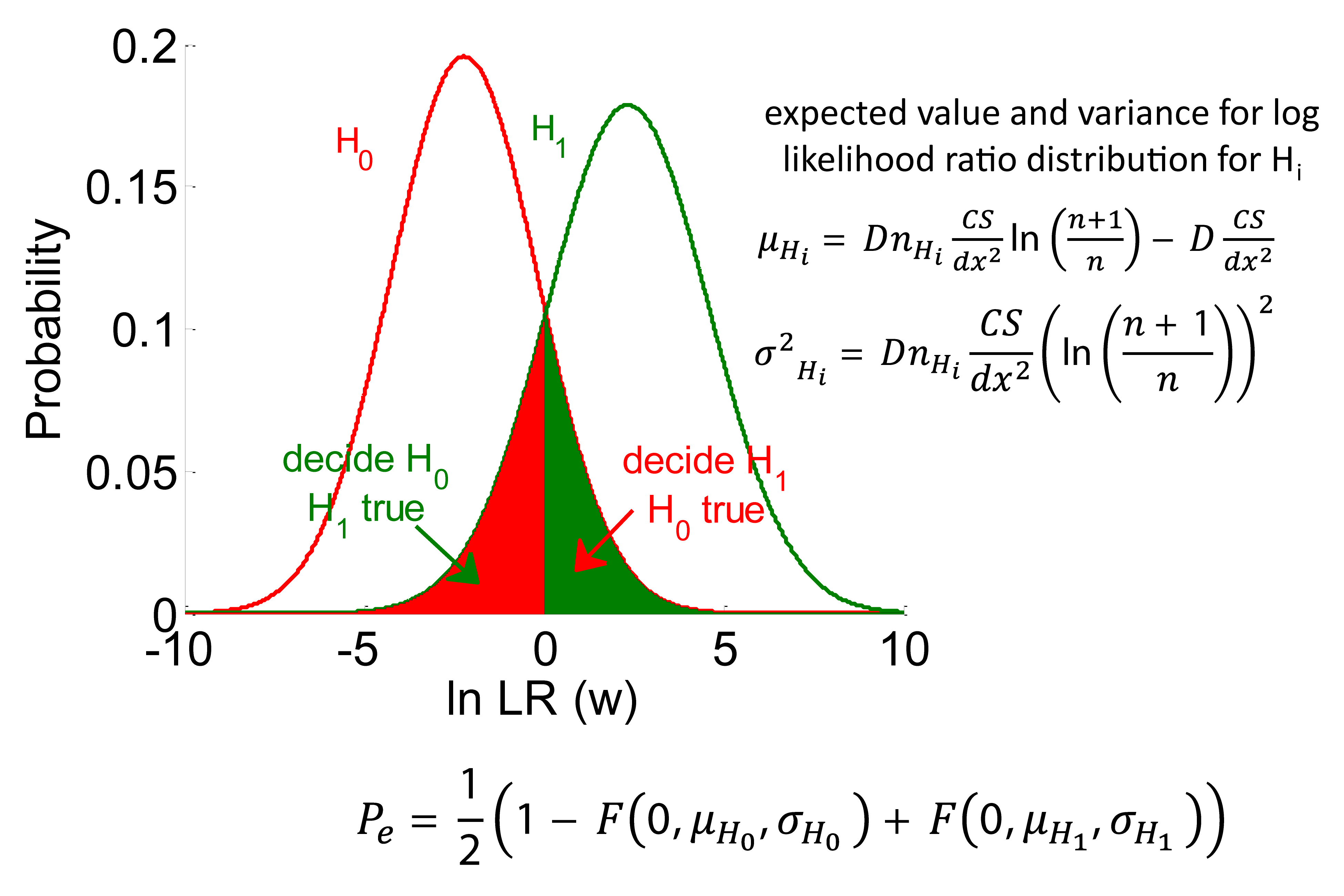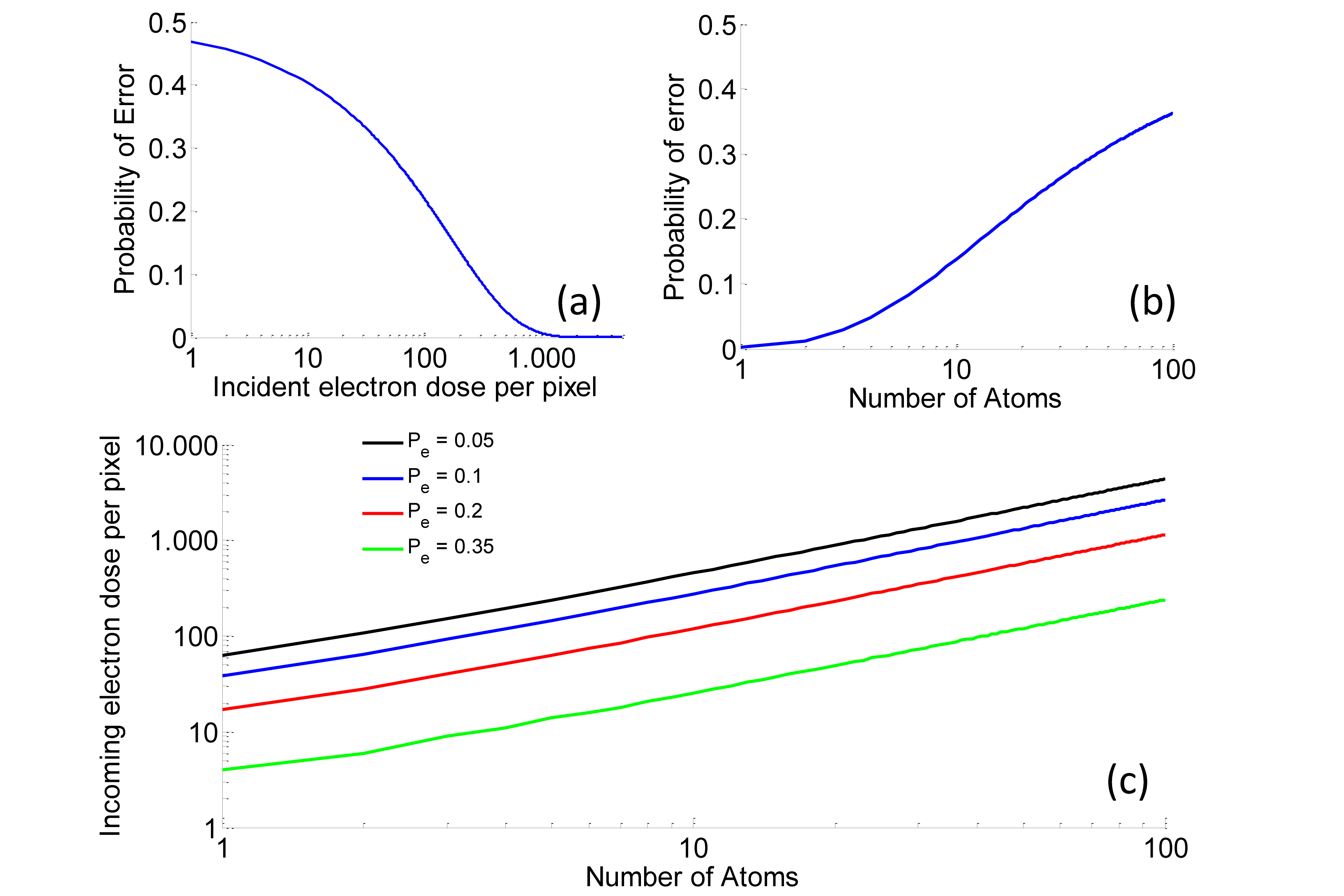IT-2-P-2255 Probability of error for counting the number of atoms from high resolution HAADF STEM images
During the last years, different quantification methods to count the number of atoms in an atomic column based on HAADF STEM images were developed [1-4]. These methods can be applied to a wide variety of experiments. However, to go beyond the current state-of-the-art, all sources contributing to errors in atom counting need to be understood. Therefore, we discuss a theoretical tool that can be used to quantitatively determine the probability of error for counting the number of atoms.
In principle, expressing the reliability in atom counts can be simplified to discussing the ability of distinguishing between n and n+1 atoms, i.e. the possibility to detect the difference of 1 atom in an atomic column. Using the principles of detection theory [5], this problem is written as a binary hypothesis test with the hypotheses corresponding to atomic columns having n (null hypothesis) and n+1 (alternative hypothesis) atoms. The goal is to minimise the probability of assigning the wrong hypothesis. This is illustrated in Fig. 1. For both hypotheses a so-called log likelihood ratio distribution can be defined. For a given atomic column, the log likelihood ratio then determines which of these hypotheses is decided. If this log likelihood ratio is larger than 0, the alternative hypothesis is decided; otherwise the null hypothesis is decided. From Fig. 1, it is clear that the probability of error is defined by the overlap of log likelihood distributions. This overlap can be calculated numerically.
As a preliminary example, the probability of error is calculated as a function of electron dose and number of atoms using a simple Gaussian model that linearly increases with the number of atoms. The analysis is shown in Fig. 2. As expected the probability of error increases for decreasing electron dose. Furthermore, it is shown that distinguishing between n and n+1 atoms in an atom column becomes more difficult for increasing n. One of the possible applications is to apply this method to realistic simulations in order to optimise the experiment design. This can be realised by minimising the probability of error as a function of a variety of parameters of interest, such as magnification, acceleration voltage, and inner and outer detector angle.
In conclusion, the method quantifies the error for counting the number of atoms as a function of the parameters of interest and enables us to understand the origin of miscounting the number of atoms.
References
[1] Erni et al., Ultramicroscopy 94, 125 (2003)
[2] LeBeau et al., Nanoletters 10, 4405 (2010)
[3] S Van Aert et al., PRB 87, 064107 (2013)
[4] A De Backer et al., Ultramicroscopy 134, p 23 (2013)
[5] den Dekker et al., Ultramicroscopy 134, p 34 (2013)
The authors kindly acknowledge funding from the Fund for Scientific Research, Flanders (FWO).

